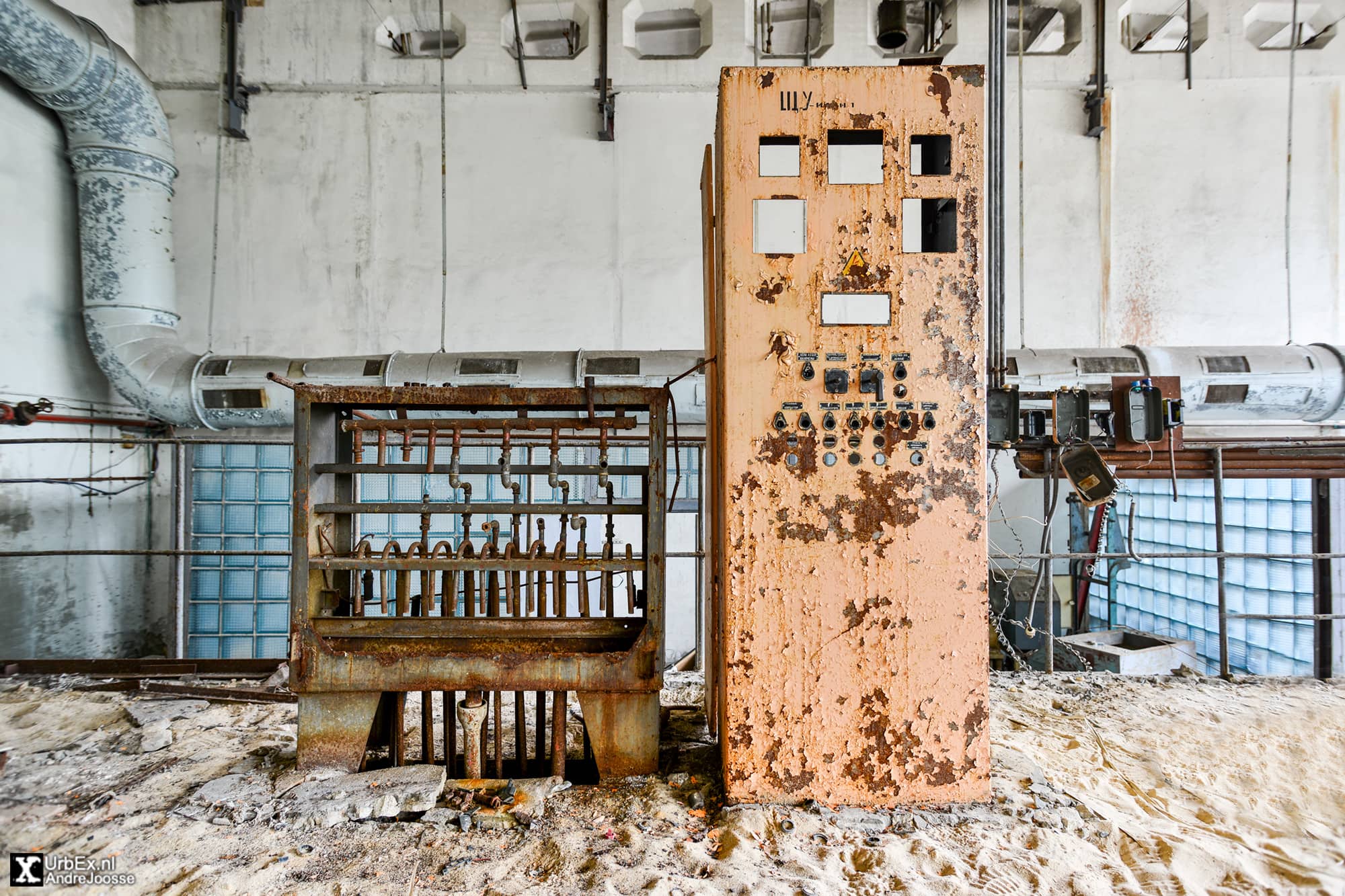Jupiter Factory Pripyat
Завод Юпитер Припять

The Jupiter factory was situated on Zavodska Street 11 in the outskirts of Pripyat. The factory used to make cassette recorders and household appliances. Also, the factory secretly produced semiconductor components for the military, and had test workshops for robotic systems.
On the roof of the hospital, a sign reads: Health of the Nation — the Country’s Wealth. The hospital had 410 beds. The clinics and outpatient buildings are spread out across various interconnected buildings. Complex МСЧ-126 also had a Morgue, Maternity Ward, Infectious disease Ward and a Dental Clinic.
As many high-educated people lived in Pripyat, the Soviet Union decided to build a factory to employ part of those people. This factory became the second employer in the area after the Chernobyl Nuclear Power Plant. The factory opened in 1980 and employed around 3500 people. Officially, Jupiter became a branch of the Kyiv factory, Lighthouse, part of the state-owned company Mayak.
It was employing many women since they are believed to have a better developed fine motor skills, so they would do better work on small parts for tape recorders and other similar equipment. On the walls, I found many posters reminding people that safe and hard work are a good thing.
Some sources claim that not a single tape recorder has ever left this place, and Jupiter was nothing but a cover-up. The plant secretly produced semiconductors and electronics for the military industry. New materials were tested in laboratories and workshops. A robotics department developed various robotic systems. In addition, the factory was believed to produce parts for intercontinental nuclear missiles with the help of plutonium that was produced as a by-product at the Chernobyl Nuclear Power Plant. But a nuclear fuel processing facility so close to the Power Plant, Pripyat, Kyiv, and last but not least, Western Europe, doesn’t really seem plausible at all. Mayak formerly known as Chelyabinsk-40, did have those facilities. But far from any large settlements, cut off from major roads, heavily guarded, hidden behind miles of wild forests and kept secret for several decades.
After the Chernobyl disaster, in 1986, the factory was used by the Spetsatom enterprise or Спецатом. The factory became a radiological laboratory for testing of various decontamination techniques. Many details of the sarcophagus were designed here. The factory was also used for developing dosimetry instruments. The factory was completely abandoned in 2002.





























